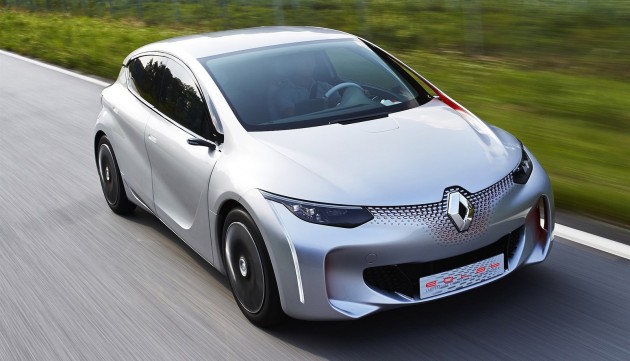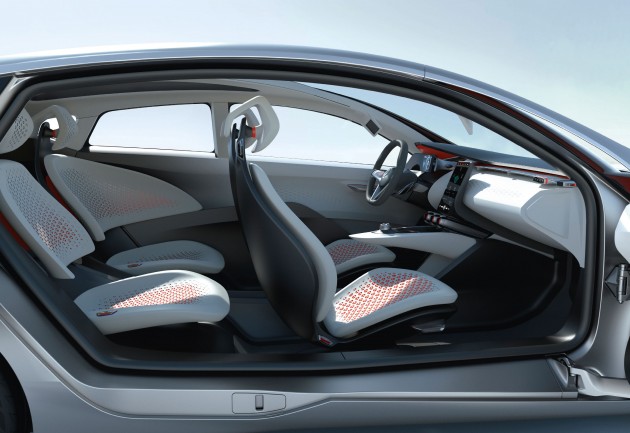
The Renault Eolab plug-in hybrid is ready for production, but Renault won't be doing so yet. The company's reluctance is down to one major hurdle that many high-tech concepts also face - high costs.
Not everybody is prepared to pay the additional cost and hybrids still represent less than 1% of the market, Automotive News Europe quotes Renault's chief performance officer Jerome Stoll as saying. At the company's annual shareholder meeting last month, Stoll said that Renault will bring to market a production version of the Eolab "as soon as the market is ready."
Revealed at last year's Paris show, the Eolab was billed as a technology showcase which previews fuel-saving tech that will appear gradually on Renault's regular production cars before 2020. The working concept's claim to fame is an amazing headline fuel consumption figure of 1 litre per 100 km, with CO2 emissions that can go as low as 22 g/km on the NEDC cycle.

To achieve the claimed FC, Renault focused on three key areas. In the aerodynamics department, the Eolab achieves a drag coefficiency figure of just 0.235 Cd (a whopping 30% lower than today's Clio), thanks to a flat underbody, active front spoiler, narrow wheels that close up when brake cooling is not needed, movable aero flaps at the rear, as well as a ride height that lowers by 25 mm at speed.
The next enemy is weight, and the extensive use of aluminium, magnesium, thermoplastics and the high tensile Very Very High Elastic Limit (VVHEL) steel shaves 130 kg from the body alone. Aluminium replaced steel in many of the suspension components, while the brakes could be made smaller thanks to the car's low weight. There's also 1.5 mm thinner glass and a polycarbonate rear screen, among other measures. At 955 kg, the Eolab weighs 400 kg less than an equivalent Clio.
The Eolab's finishing move is a Z.E. Hybrid powertrain that combines a 40 kW (54 hp), 200 Nm electric motor, a 6.7 kWh lithium ion battery and a 75 hp/95 Nm 1.0L three-cylinder engine. A clutchless three-speed transmission – first two ratios are reserved for the electric motor, the top ratio for the internal combustion engine - plays power broker. The Eolab has an all-electric range of 60 km.
Unlike the 0.9 litres per 100 km Volkswagen XL1, which looks like a space machine and costs an eye-watering 110,000 euros, the Eolab was conceived as a realistic family hatchback with doable technology. Perhaps it's not time yet for such a car, but the day will come.
"Premium carmakers see plug-in hybrids as the key bridging technology between EVs and traditional powertrains, but the cost remains high. Plug-in hybrids might be expensive at the moment, but they will eventually come down in price and become affordable in the mainstream sector," said IHS Automotive analyst Tim Urquhart, pointing out that Audi, BMW, Mercedes-Benz, Porsche and Volvo are all expanding their plug-in hybrid offerings.


No comments:
Post a Comment